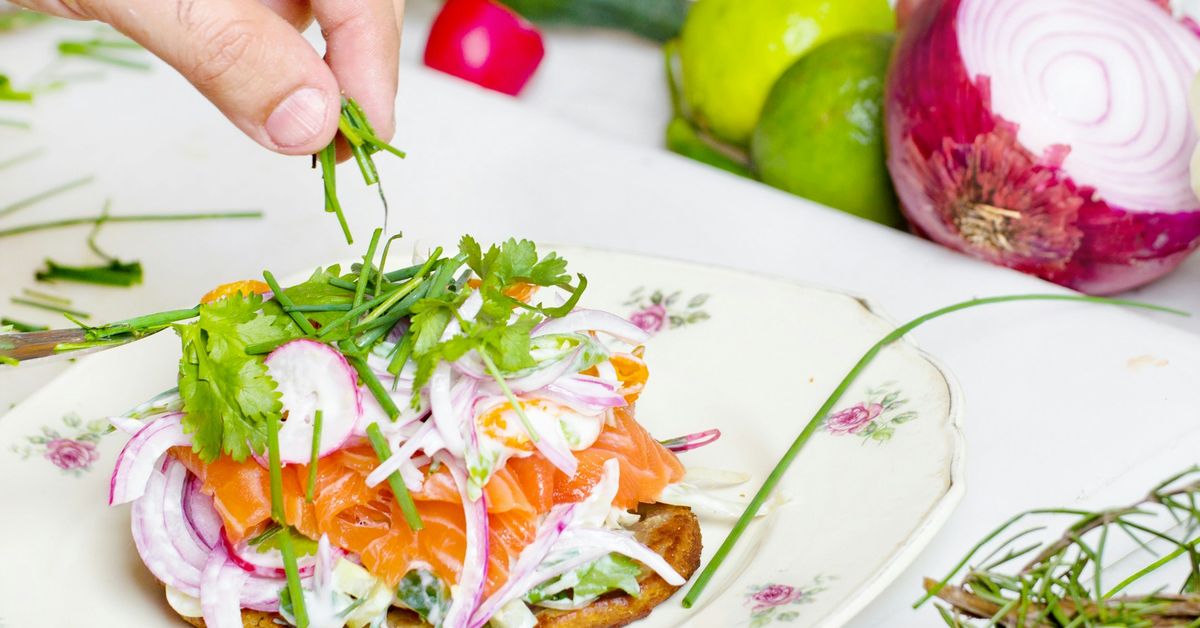Savory Adventures Through Regional Cuisines and Their Hidden Gems
When was the last time a meal made you feel like you were transported to another world? For many of us, food isn’t just about sustenance; it’s about experiencing culture, history, and sometimes, a touch of adventure. As I meander through the culinary landscapes of various regions, I often find myself in awe of the hidden gems—those unassuming eateries and local specialties that whisper stories long forgotten. Whether it’s the spicy street food of Thailand or the hearty stews of Eastern Europe, regional cuisines offer a treasure trove of flavors just waiting to be discovered.
The Allure of Regional Cuisines
Why do we gravitate toward regional cuisines? Perhaps it’s the authenticity, or maybe it’s the nostalgia that invokes memories of family dinners or childhood treats. Each region has crafted its identity through its food, influenced by geography, climate, and cultural exchanges. I remember my first taste of a traditional paella in Valencia, sitting by the beach, the sun setting over the Mediterranean. The saffron danced in the rice, and it struck me that every grain carried a story of the land.
Spain: A Fiesta of Flavors
Spain is a country where regional diversity shines brightly through its vibrant cuisine. Each autonomous community contributes its unique flair, resulting in a culinary mosaic. From the seafood-rich dishes of Galicia to the hearty stews of Castile, there’s a flavor for every palate. But let’s not forget about the hidden gems tucked away in the alleyways of bustling cities.
Consider the lesser-known dish “pisto,” a ratatouille-like medley from La Mancha. Often overshadowed by its more famous cousin, ratatouille, this humble vegetable dish is typically served with a fried egg on top. You’ll find it in small taverns, where locals gather to share stories over a glass of wine. If you’re lucky enough to stumble upon a family-run joint, you might just find the recipe passed down through generations, infused with love and a dash of history.
Italy: Beyond the Tourist Traps
Italy, a country synonymous with culinary excellence, is often viewed through the lens of its iconic dishes like pizza and pasta. Yet, venture beyond the well-trodden paths of Florence and Rome, and you’ll uncover a world of regional specialties. I remember a trip to the lesser-known region of Molise, where I tasted “cavatelli,” a small pasta dish that was just the right amount of chewy. It was served with a rich tomato sauce and topped with freshly grated pecorino cheese—simple yet unforgettable.
What’s fascinating is the variety within regions. In Emilia-Romagna, for example, you can find “gnocco fritto,” a delightful fried dough served with cured meats. In contrast, Sicily offers “arancini,” stuffed rice balls that are a perfect street food indulgence. The trick is to seek out local festivals, where traditional dishes are celebrated, and family recipes are showcased. After all, food in Italy often tells the story of its people, and no one does storytelling better than a nonna in her kitchen.
Asia: A Tapestry of Flavors
Asia is a culinary wonderland, with each country boasting its own flavor profile and traditions. Take Thailand, for instance. While dishes like pad Thai and green curry have gained international fame, the true magic lies in the street food markets, where vendors whip up tantalizing snacks that are often overlooked. I’ll never forget the first time I tried “som tam,” a spicy green papaya salad bursting with flavors of tamarind, lime, and chili. It was a symphony of sweet, sour, and spicy that danced on my taste buds.
Venturing to the lesser-known corners of Thailand, you might stumble upon “khao soi,” a creamy coconut curry noodle soup from Northern Thailand, or “khao jee,” a flavorful grilled sticky rice snack. These hidden gems reveal the rich tapestry of regional influences and the creativity of local chefs. As I savored each bite, I realized that food is a gateway to understanding a culture, its people, and their way of life.
Eastern Europe: Hearty and Homely
As we head to Eastern Europe, the cuisines here tell tales of resilience and tradition. From the borscht of Ukraine to the pierogi of Poland, each dish has its roots deeply embedded in the soil of history. But hidden gems often lie in the family-run eateries where recipes have remained unchanged for decades. I recall a small village in Poland where I tasted “bigosh,” a hunter’s stew made with sauerkraut and various meats. It was served in a cozy wooden cabin, and the warmth of the meal matched the hospitality of the locals.
In Romania, “sarmale” (cabbage rolls filled with meat and rice) is a must-try, often prepared during family gatherings. Discovering these regional delicacies offers a glimpse into the heart and soul of Eastern European culture—an experience that transcends the plate.
The Middle East: A Culinary Crossroads
The Middle East is a fascinating crossroads of flavors, with influences from Africa, Asia, and Europe. While kebabs and hummus are known worldwide, the hidden gems often lie in the local markets and family kitchens. In Lebanon, for example, “mujadara,” a dish made of lentils and rice topped with caramelized onions, is a staple that embodies the essence of simplicity and flavor.
Visiting a local eatery in Beirut, I discovered “kibbeh,” a dish made of bulgur wheat and minced meat, served in various forms, from raw to baked. Each bite was a revelation, showcasing the balance of spices and textures. The joy of exploring regional cuisines in the Middle East often comes from sharing meals with new friends, highlighting the significance of community in this culinary journey.
South America: A Flavorful Journey
As we sail across to South America, the diverse cultures and landscapes provide a rich tapestry of culinary delights. Argentina is famed for its beef, but the regional specialties often go unnoticed. In the north, for instance, “empanadas” are filled with local ingredients, reflecting the agricultural bounty of the region. I once had the pleasure of trying an empanada filled with llama meat in Salta; it was an unexpected twist that left a lasting impression.
Brazil’s “feijoada,” a black bean stew with a mix of meats, tells a story of colonial influences and African heritage. This hearty dish is typically served on Wednesdays and Saturdays, often accompanied by rice and citrus. The experience of enjoying feijoada with locals during a festive gathering is something I cherish—food truly has a way of bringing people together.
North America: A Mosaic of Flavors
In North America, the culinary landscape is as diverse as its people. While cities like New York and Los Angeles boast a plethora of dining options, the hidden gems often lie in smaller towns and rural areas. I remember traveling through the American South and stumbling upon a hole-in-the-wall barbecue joint in Memphis. The ribs, coated in a tangy sauce, fell off the bone, and the warmth of the southern hospitality made the meal unforgettable.
In Canada, regional specialties like “poutine,” a decadent dish of fries topped with cheese curds and gravy, have captured the hearts of many. However, it’s the local variations found in Quebec, where toppings can range from duck confit to smoked meat, that truly stand out. Exploring these regional delights offers not just a taste but a connection to the culture and community.
The Role of Food Festivals and Cultural Events
Food festivals and cultural events play an essential role in celebrating regional cuisines. They offer a platform for local chefs to showcase their culinary skills and for visitors to experience the authentic flavors of a region. I’ve attended several food festivals where the vibrancy of the local culture is palpable—music, dance, and, of course, food. There’s something magical about watching a chef prepare a traditional dish while sharing anecdotes about its history.
Events like the “Oktoberfest” in Germany or “La Tomatina” in Spain are not just about the food; they’re a celebration of community and tradition. During my visit to Oktoberfest, I savored a pretzel so large it could have been an Olympic event in its own right, all while soaking in the cheerful atmosphere created by locals and travelers alike.
How to Find These Hidden Gems
So, how does one discover these culinary treasures? It often requires a willingness to explore and a bit of curiosity. Here are a few tips that might help:
- Ask Locals: They often have the best recommendations, steering you away from tourist traps toward family-owned eateries.
- Explore Markets: Visiting local markets can provide insight into regional ingredients and traditional dishes.
- Participate in Cooking Classes: Learning to cook a regional dish can deepen your appreciation for its flavors and history.
- Follow Food Blogs and Social Media: Many food bloggers and influencers highlight hidden gems that may not be on your radar.
Remember, the joy of food is not just in the eating but in the stories and experiences that come with it. The next time you find yourself in a new place, take a moment to seek out the local flavors and embrace the adventure.
Final Thoughts
As we conclude this savory journey through regional cuisines and their hidden gems, it’s clear that food is more than just a meal; it’s a reflection of a region’s identity. The flavors, aromas, and experiences captured at local eateries tell us more about the people and culture than any guidebook ever could. So, the next time you’re tempted by the familiar, remember to venture off the beaten path; you might just find a hidden gem that changes your culinary perspective forever.
In the end, isn’t that what life is about? Exploring, discovering, and savoring every moment—one bite at a time.




